So, as the title says, I have an hdmi out on the iPad and an observer registered for screen connections, upon connection the user chooses the res and a view is outputted.
However, if I load a view from a nib, or even from a programatic view controller, the ipad shows a landscape view in portrait (yes, both situations are set to landscape).
I.e.
ExternalViewController *ex = [[ExternalViewController alloc] init];
[externalWindow setRootViewController:ex];
does this:
 If I create the view itself programatically. like so:
If I create the view itself programatically. like so:
UIView *test = [[UIView alloc] initWithFrame:[externalScreen applicationFrame]];
[test setBackgroundColor:[UIColor whiteColor]];
UILabel *msgLabel = [[UILabel alloc] initWithFrame:CGRectMake(10, 40, 100, 30)];
msgLabel.text = @"External!";
[test addSubview:msgLabel];
It runs like some form of magical dream:

However I want the viewcontroller to load (and work!) so, StackOverflow, I ask you. has anyone come across this before?
EDIT: It does go without saying that common sensical answers do not get a bounty, I am after a fix, not a workaround. With my limited brain, all I can think to do is create a method that creates a view based on it's inputs and adds that as a subview of the external monitor, it is clear that this is a hack solution so a fix is appreciated! Thanks!
EDIT:
-(id)initWithFrame:(CGRect)_rect
{
rect = _rect;
if (self = [super init])
{
externalView = [[UIImageView alloc] initWithImage:[UIImage imageNamed:@"105.png"]];
externalView.alpha = 0.0;
[externalView setFrame:rect];
[externalView setBackgroundColor:[UIColor yellowColor]];
self.view = [[UIView alloc] initWithFrame:rect];
self.view.backgroundColor = [UIColor whiteColor];
return self;
}
}
- (void)loadView
{
self.view = [[UIView alloc] initWithFrame:rect];
self.view.backgroundColor = [UIColor blackColor];
[self.view addSubview:externalView];
}
As requested, this is how I am loading the viewcontroller, initialising with the size of the external screen. Thanks